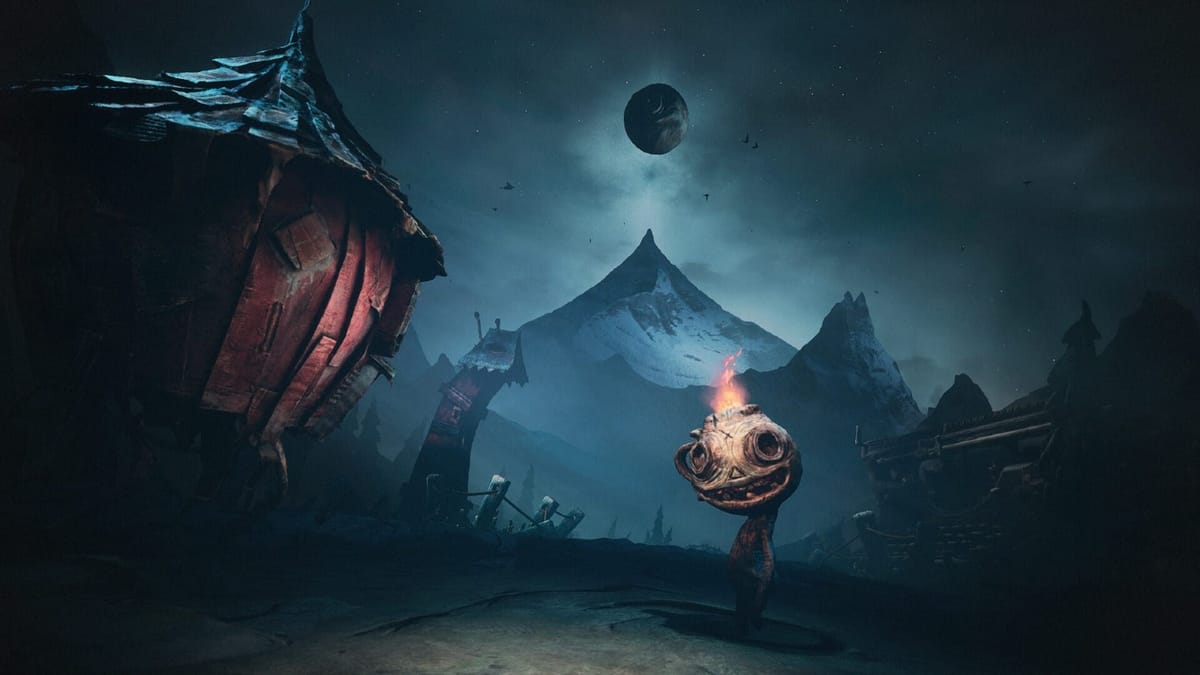
Who told MoonHood, developers of The Midnight Walk, that their game had to have capital-G Gameplay? And why oh why did they have to curse this gorgeous, tragic, hopeful walking simulator with half-baked puzzles and buggy run-hide-repeat horror sequences? We may never know, but when all is said and done, The Midnight Walk left an impression on me. Did I enjoy playing it? No. Did I enjoy experiencing its art, its music, its palpable melancholy? Absolutely. The game contains multitudes; high highs contrasted with frustrating lows culminating in a brilliant ending that made me forget all about the game’s inexplicable inclusion of a gun.
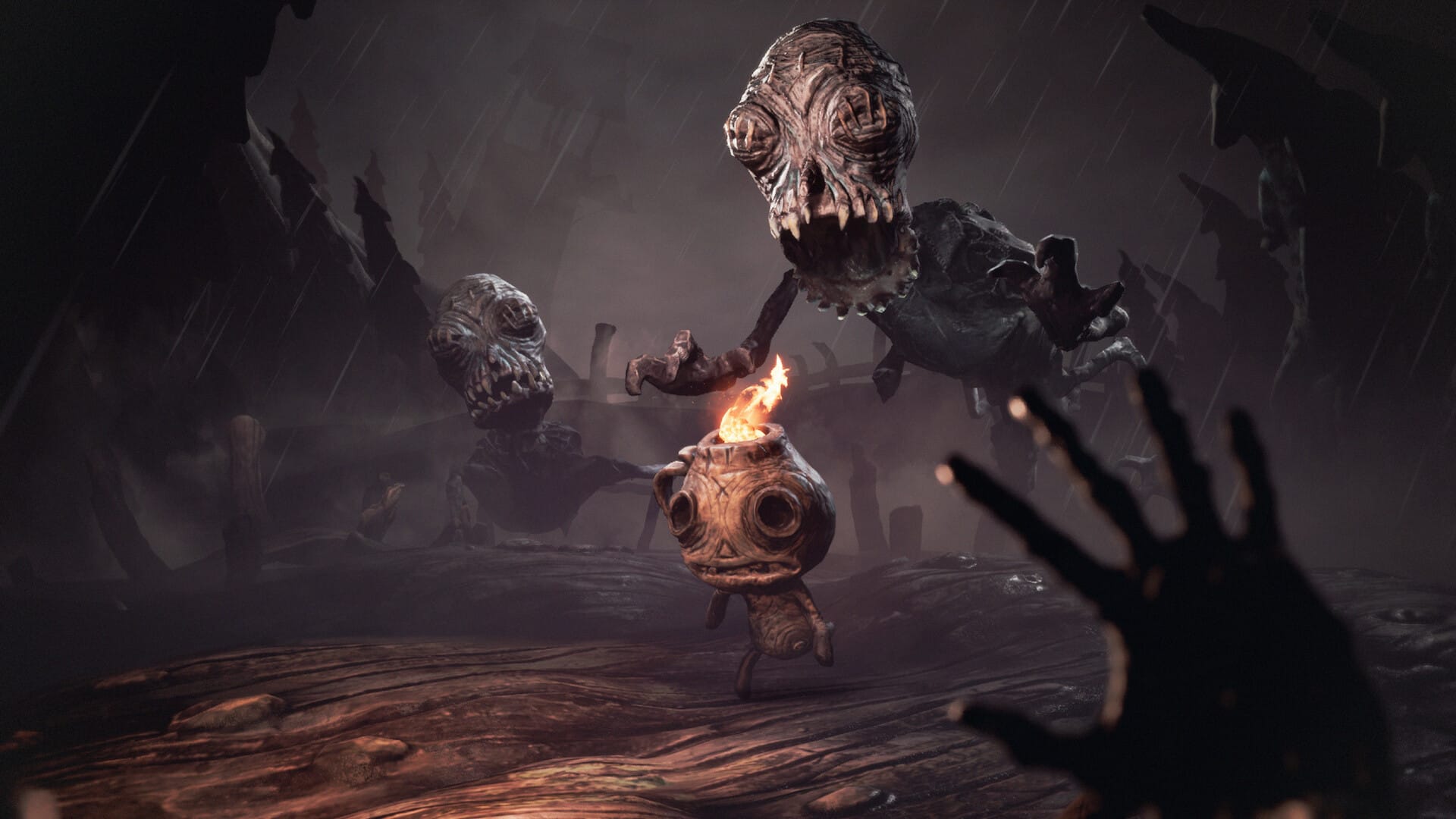
The early minutes of The Midnight Walk take you through a cursory tour of the bizarre claymation world MoonHood has created, a world that may bear resemblance to Henry Selick’s iconic works like Coraline and The Nightmare Before Christmas but has an even darker, more resigned mood. This surreal world was once alight and its denizens were content - but that was long ago. At the time of your arrival, the world has been immersed in darkness and feels more like a graveyard than the whimsical, bustling landscape it was once described as. Your job, as the being known as The Burnt One - along with your trusty new companion, Pot Boy - is to restore the sun and bring peace to this once glorious land. Along the way, you’ll encounter horrifying creatures lurking where the sun no longer shines, inhabitants driven different degrees of mad by the lack of light, and, in rare cases, an unlikely ally to guide your way along the arduous path to Moon Mountain.
It’s a phenomenal setup that sounds good on paper and only becomes more impressive when you see the game in action. There’s a jarring mix of objects and characters that render at the normal 60fps and other ones that move at low framerate, much like a claymation film would, creating a creepy sense of unbelonging. If there’s any criticism I can levy at the game’s visuals, it’s that there aren’t enough low-framerate models; it’s a shame that there aren’t very many freaky, janky critters roaming around.
Speaking of janky - the game is a technical mess. Let’s do a not-so-brief rundown of the bugs I encountered along my trek: asset pop-in, clipping through objects (both myself and enemies), inconsistent AI behaviour, tense music persisting even though I’d left a chase area, death animations that would clip me through the ground and obscure the animation entirely, a bug that causes some objects to not pause when the game is paused (this one broke my brain slightly), and a host of other minor foibles that put a damper on my time with the game. With most games, bugs are to be expected, and a certain amount of them are more than acceptable. But with a game like The Midnight Walk that prides itself on its immersion (especially in the VR mode that I did not play for this review), bugs are a one way ticket to making me feel like I’m a human playing a video game, not a member of a living, breathing fantasy world. It’s a disappointing distraction, but one that can hopefully be improved over time.
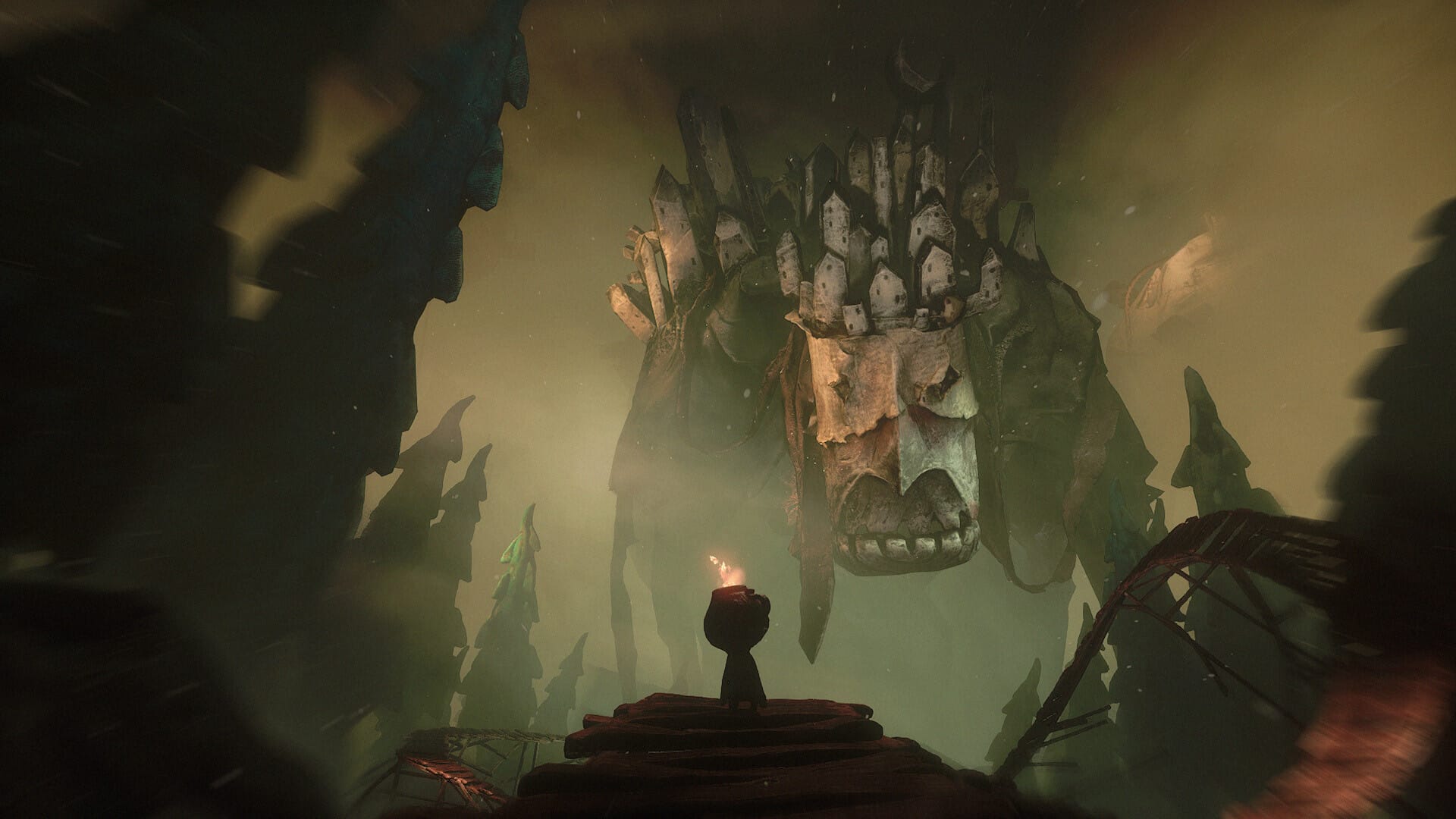
The devs’ intended experience, however, is filled with nitpicks far deeper than some fixable bugs. It’s easiest to talk about gameplay: in brief, it’s bad. The Midnight Walk is a combination of a very, very light puzzle game and a horror game akin to SOMA or Outlast, in that there’s no real way to fight back. The puzzles are so simple that I struggle to even address them as such. The mechanics never build on each other, there’s never a fun twist on a familiar idea, there are only simplistic puzzles with unexciting, immediately evident solutions. The horror sections are arguably even more exhausting - most involve simply running away towards a nearby wardrobe that somehow shields you from all harm and then waiting for the monster to leave. One late game enemy type features a mechanic that's at least somewhat intriguing, blending puzzle and horror together, but it's too little, too late. Both forms of “gameplay” serve as nothing more than diversions, a nuisance rather than a source of excitement, dread, or…anything at all, really.
Then, there’s the eponymous (to this review) gun. Never has a video game gun baffled me more. It’s less of a weapon and more of a puzzle tool, I’ll give it that, and yet its mere existence makes me shudder. Why does The Midnight Walk, a contemplative game about finding light amidst the darkness, feel the need to include a gun of any variety? Did the developers think the game lacked excitement? Or Call of Duty crossover appeal? The gun may not be used to mow down hordes of enemies, and yet it feels emblematic of the game’s general disconnect between its shoehorned gameplay and its far more nuanced narrative.
The game also features a significant amount of collectibles; including music tracks, little models of the game’s various creatures, and rolls of film that each provide a somewhat intriguing piece of a sub-story filled with lore. That’s all well and good - collectibles mean exploration and exploration means meaningful gameplay! Alas, that is anything but the case. Perhaps the most baffling decision in the entire game was to have nearly every single collectible located directly on the critical path, located behind the exact same tree-stump-with-a-small-door asset. It would be more difficult to miss the game’s collectibles than to find them. The concept of a collectible is inextricable from that of exploration; they’re supposed to be designed in such a way that they’re out there for curious players to uncover but somewhat hidden from the beeline-inclined ones. The Midnight Walk seems to be familiar with traditional gameplay systems but has no idea how to implement them in a way that makes them fun or engaging. There’s a feeling of obligation rather than passion, something I never felt when taking in the game’s story.
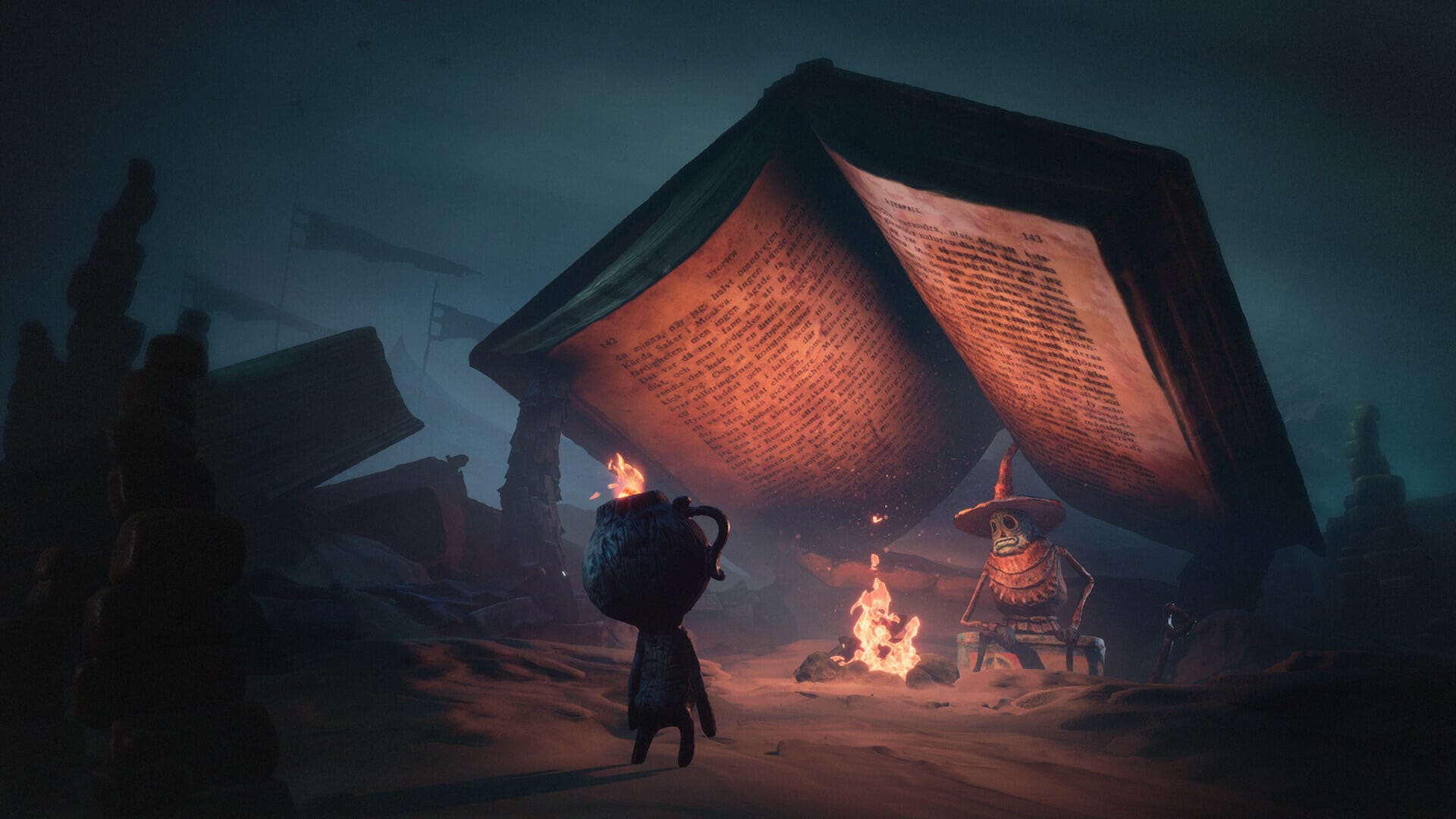
Unfortunately, even The Midnight Walk’s most redeeming aspect is not without its fair share of missteps. The tale is split into six chunks: a prologue to get us accustomed to the world, three middle chapters that each delve into a new area and its residents, and a two part epilogue that ties up the game’s themes with a somber yet optimistic bow. The majority of a playthrough will be spent in those middle chunks, each of which has the capacity to be phenomenal but doesn’t quite have the confidence to reach their potential. The game is afraid of its own emotional depth and doesn’t fully trust its audience to understand its subtext. Everything is woefully overexplained; just when you think you have a comfy grasp on any given chapter’s themes, a character will begin to lecture you on what you just figured out on your own. Be prepared for plenty of lore dumps and monologues, all of which are unnecessary when the real meaning is relatively easy to parse from what you’re shown, not told.
I wouldn’t harp so much on this issue if the game wasn’t filled with some fascinating concepts and thematic rigor that isn’t seen very often in games. The first chapter has you tracking down a seemingly rabid beast on behalf of a town populated with a kooky cast of disembodied heads. You’ll slowly discover that the beast is the last of a once peaceful race and the heads used to be able-bodied human-like folk who hunted the beast and its kin. Upon realizing the horror of their actions, the aggressors voluntarily decided to rend their heads from the rest of their bodies in a misguided attempt to remove themselves from the violence they had inflicted. I adore this. The heads contain the capacity to feel remorse for their actions, but not the wisdom or self-reflection to realize that their bodies were simply the weapon; their heads, of course, made all their decisions.
Other chapters also deal with themes of regret; the third tells an especially tear-jerky tale of a father who feels deep guilt for how he’s treated his daughter who was more drawn to a life path that he hadn’t envisioned for her. While the concept is sound and the emotion is present, all of this is imparted to the player through a series of (admittedly stunning) black-and-white short films, with intertitles explaining the characters’ feelings without much room for nuance or any form of player interaction. The game is filled with these little missed opportunities where the developers appear to be afraid of the player missing a single detail, at the expense of some deeper substance.
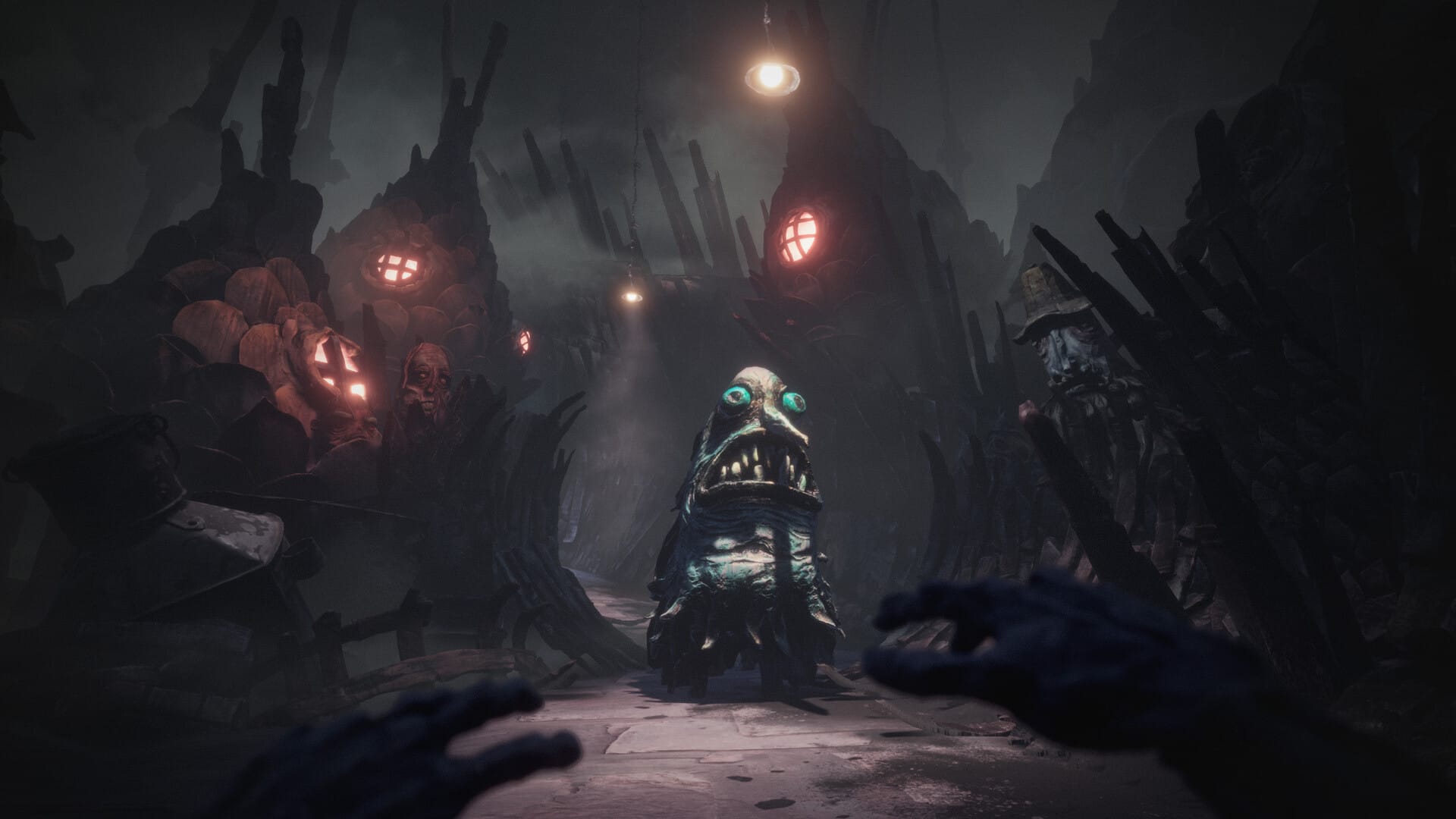
Despite my harshness thus far, the moments where the game just works are plentiful enough that I could nearly ignore the many issues I found throughout my brief playthrough. The ending is the most glorious of those moments. As you approach Moon Mountain, prepared to reignite the world’s flame, a nagging doubt starts to arise. Is this what you were meant to do? Or are things not so simple? Could rekindling this languishing world really be the answer, or would that just start the cycle over again (back off, Dark Souls fans, I swear this is different)? This doubt turned to apprehension towards the idea that light is what this world needs, and when I arrived at the final (and sole) choice, I knew what needed to be done.
The game’s themes of denial and sadness and desperation all took on another form; that of hope and prosperity in spite of the horrors this world has experienced. Sometimes things are dark and seem like they can’t get any worse…and we go on anyway. No light to show you the way, just a will to move forward towards something uncertain. Finally, the game takes a step back and allows these feelings to be felt rather than imparted to you through a lecture, and it’s all I’d wanted the entire time.
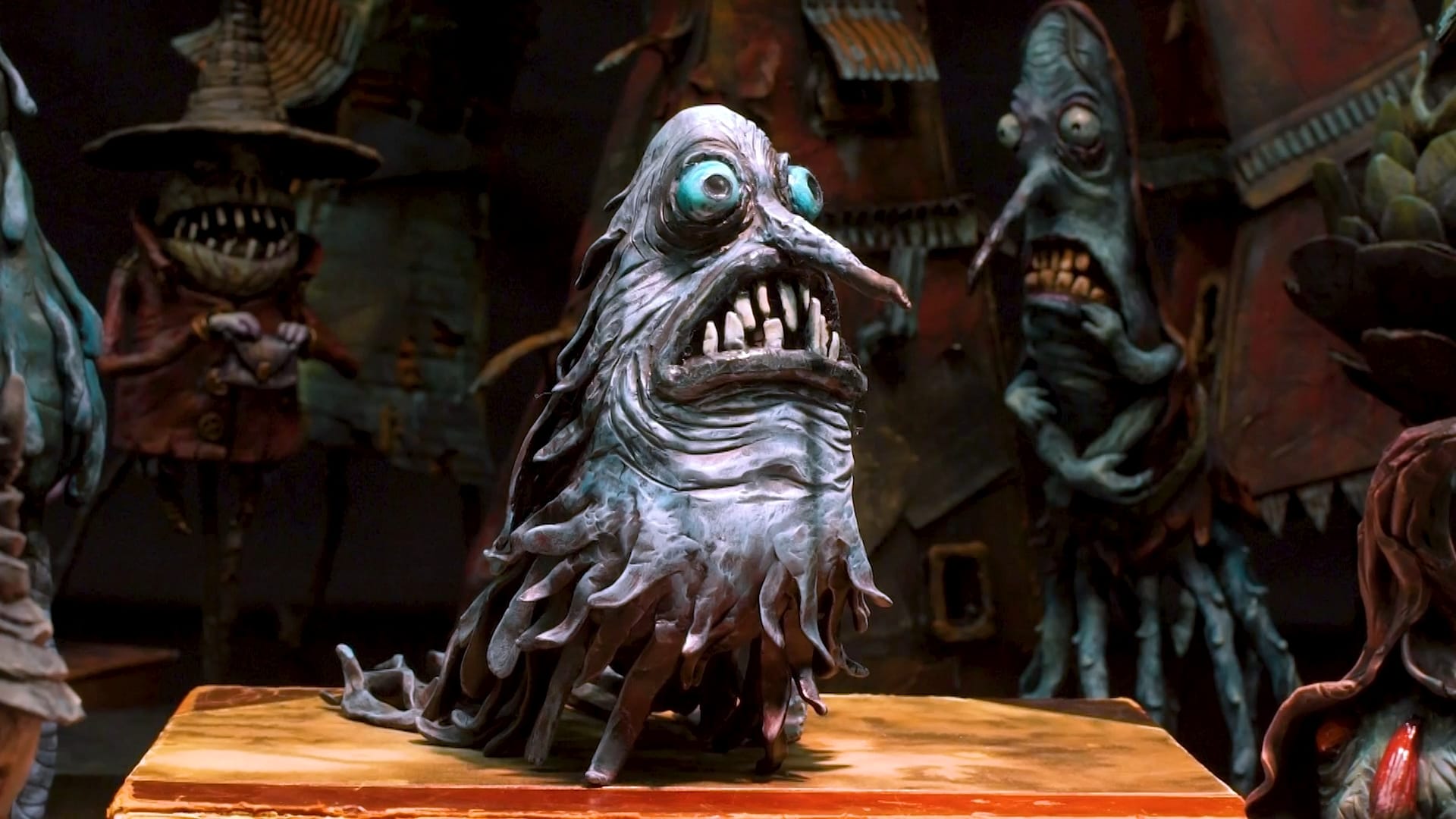
The Midnight Walk is that student who doesn’t get particularly good grades but you can see that they’re brilliant, if only they’d apply themselves to the right subjects. There’s so obviously an immense amount of talent at Moonhood, yet so much of it feels wasted on underbaked gameplay ideas and a story that should’ve taken on a subtler form. The visuals are undeniably gorgeous and filled with personality; I’ve found myself returning to the game only to admire its twisted claymation models. The music - look up melancholy in the dictionary, it will surely start playing the game’s soundtrack, somehow. It’s so perfectly moody, a medley of stripped back strings that never failed to elevate the game’s greatest emotional beats. The Midnight Walk is absolutely worthy of your time if you’re willing to put up with a moderate amount of frustration and mild disappointment. If nothing else, do it for Potboy.
The Midnight Walk
Good
The Midnight Walk sits on the precipice of greatness but tragically falls short when it comes to gameplay and, too often, the presentation of its story. Despite its many problems, the game’s magnificent high points make this brief journey worthwhile.
Pros
- When the story hits, it hits hard
- Incredible claymation style
- Beautiful soundtrack
Cons
- A litany of minor but distracting bugs
- A bad case of telling, not showing
- Unsatisfying gameplay
This review is based on a retail PS5 copy provided by the publisher.
